I joined the dive team at the Point Defiance Zoo & Aquarium in Tacoma, WA, for a week of aquarium and field diving, trying new dive equipment, and learning about aquarium dive operations.
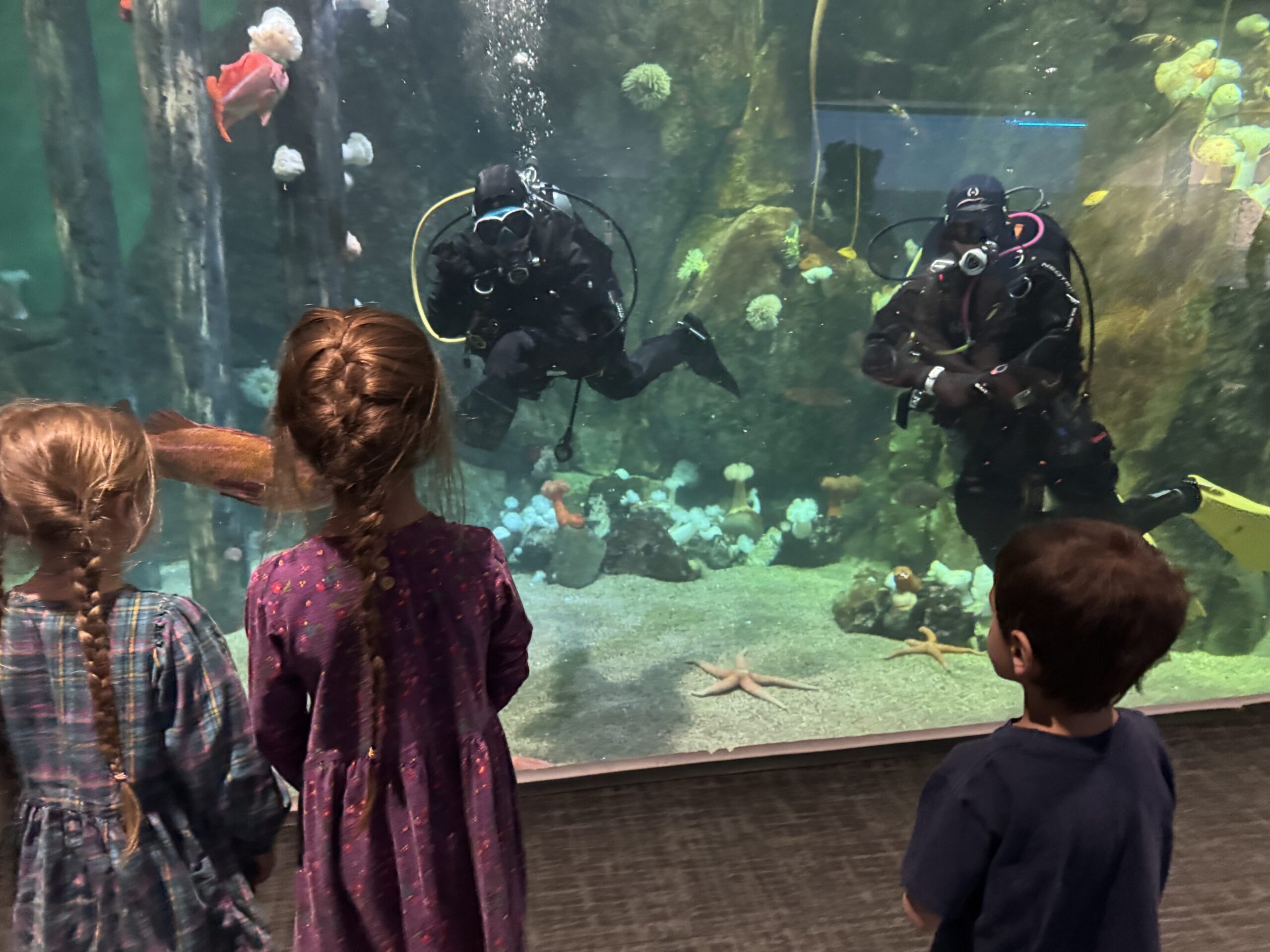
For my first dive, I jumped into the chilly Northwest Waters habitat (pictured above), an aquarium hosting local species from the Puget Sound. These include many species of rockfish, anemones, and (artificial) bull kelp. Interacting with people on the other side of the glass was so much fun, and it was one of my highlights from this trip!
Several species of rockfish in the Puget Sound are at risk, including the Bocaccio Rockfish (Sebastes paucispinis) and Yelloweye Rockfish (Sebastes ruberrimus) which are listed as threatened under the Endangered Species Act. Along with educating guests at the aquarium about rockfish, PDZA also conducts rockfish biodiversity surveys locally in the Puget Sound, partnering with organizations like Reef Check and Puget Sound Restoration Fund. I got to tag along for some field dives where the team did some Young-of-Year (YOY) rockfish surveys, looking for young rockfish.
I also got to learn a bit about the behind-the-scenes work of aquarists and the dive team. I observed a shark feed in the Outer Reef habitat and learned about how each species is cared for and the preparation that goes into feedings. This habitat has five species of sharks, including a tasselled wobbegong shark, blacktip reef sharks, whitetip reef sharks, grey reef sharks, and zebra sharks. Later in the week, I got to join a maintenance dive and observe a team of divers work to clean and upkeep the habitat. Having only done training dives in an aquarium before, it was interesting to see a different side of aquarium diving.
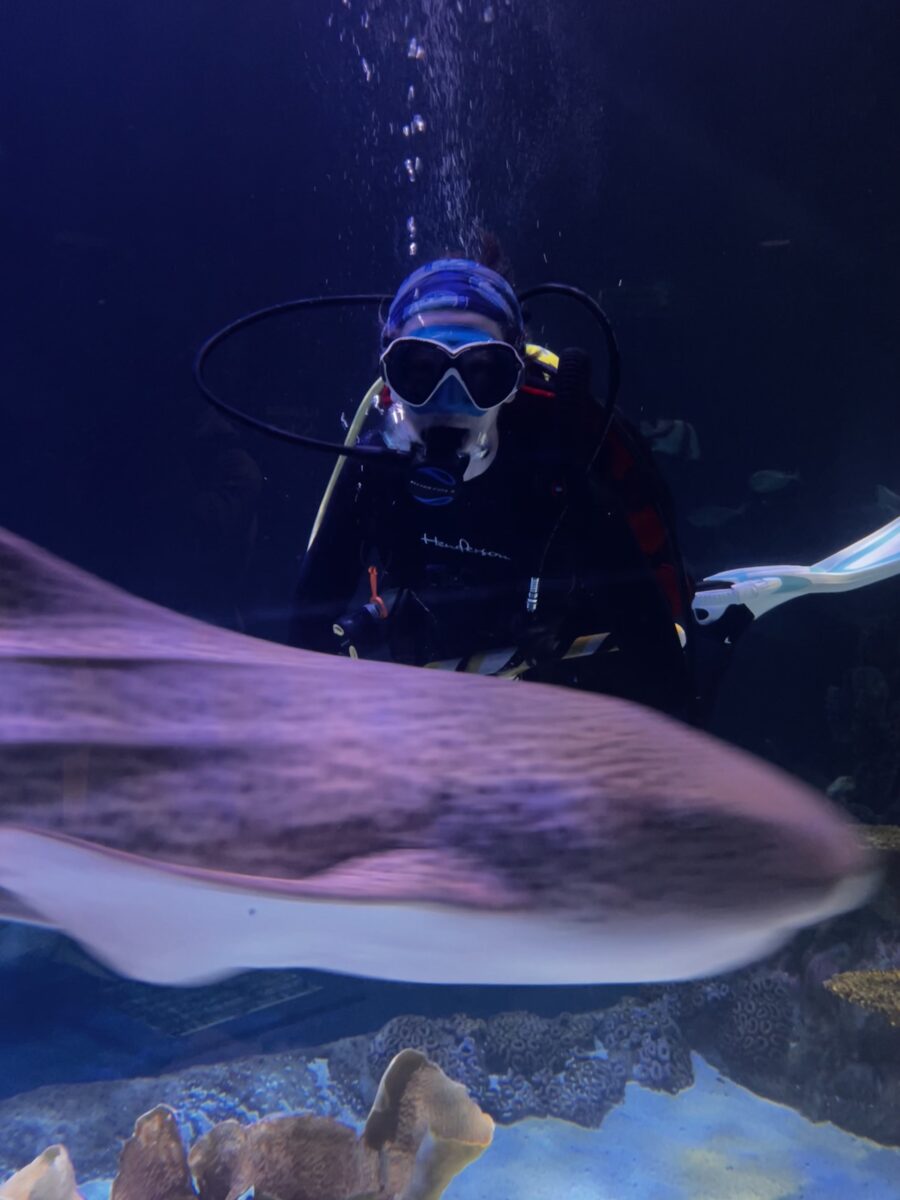
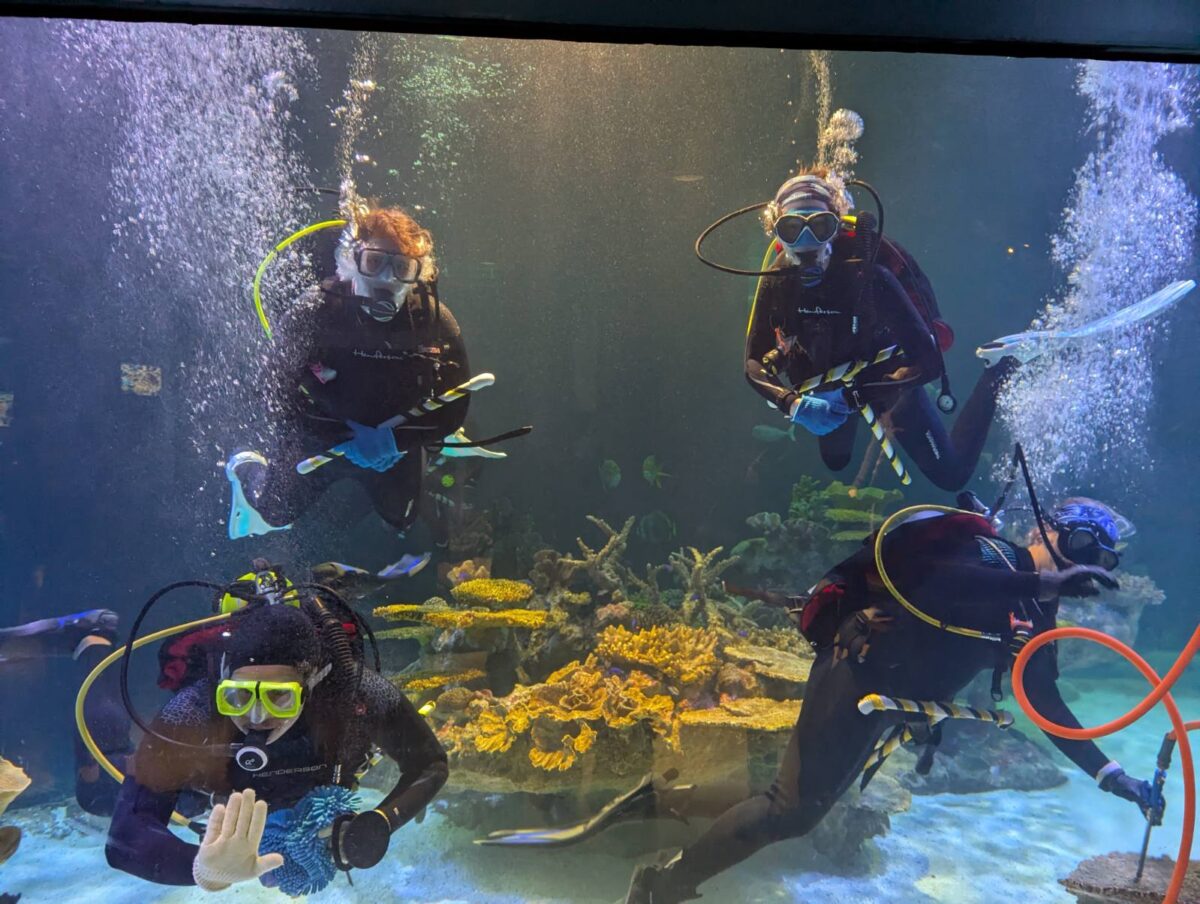
The Outer Reef is also part of an educational program called Eye-to-Eye. This program takes guests into a corner of the habitat to observe the sharks. Guests dive very shallow and with surface supplied air (a long hose with a regulator to breathe off of and no tank), so no SCUBA or even swimming experience is required. This format also allows for accommodating and adapting the program for people with special needs or disabilities. I observed the program from start to finish, which includes a briefing at the beginning and end about safety and the importance of sharks. It was so cool to observe this program that creates access to the underwater world and really educates people about sharks, their role in the ecosystem, and what individuals can do to make a difference.
During my visit, I also had several training opportunities, including a DAN Diving First Aid for professionals course, where I learned first aid and emergency oxygen administration skills in the context of being a dive professional. I also learned how to use full face masks and got to try one out in the Blue Hole habitat. This was such a fun experience because the mask had a microphone, so I could talk to people on the surface! And because the mask covers the entire face, I could breathe out of my nose, which was a very strange feeling. After this, I wished I could do every dive in a full-face mask! I also got to dive in a very shallow lagoon habitat with surface supplied air, which I had never done, and did some cleaning of the aquarium glass.
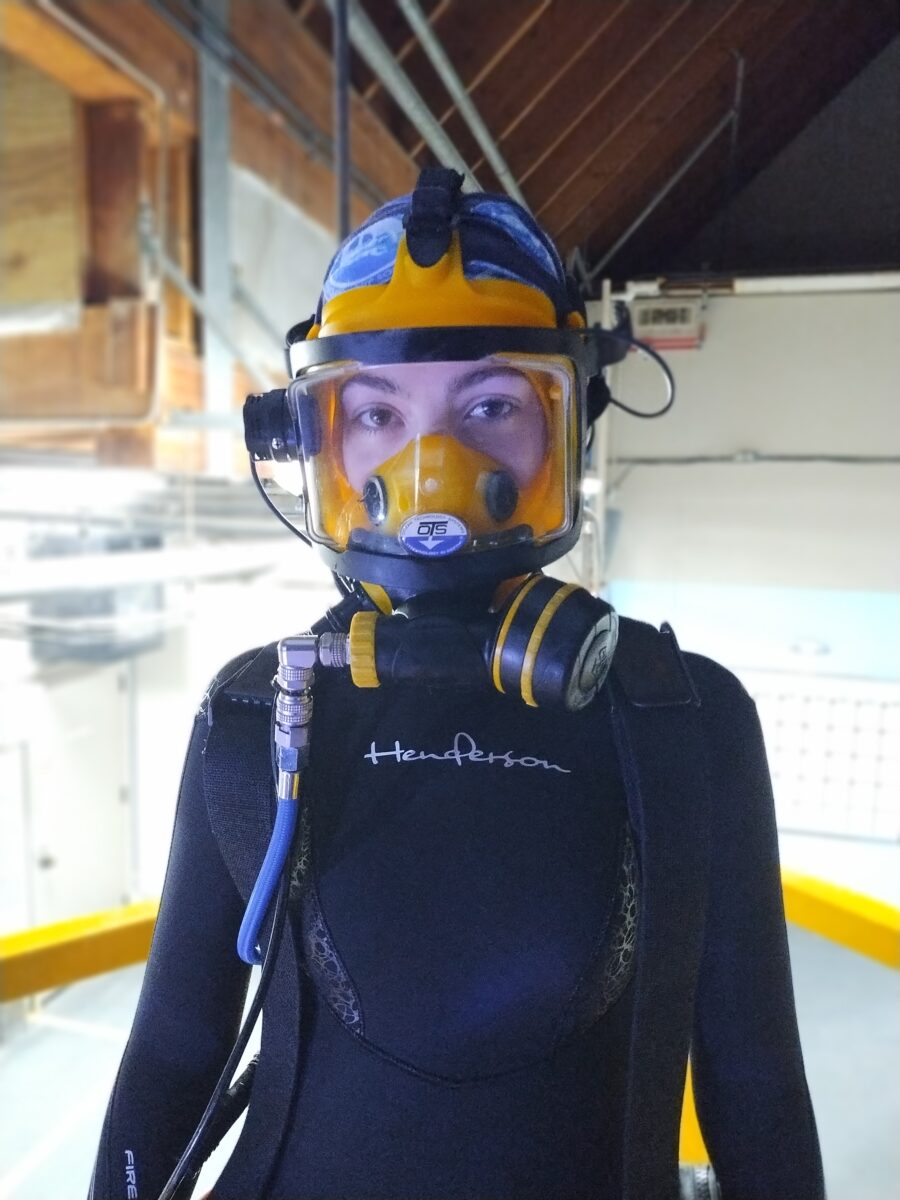


I left this experience having learned so much, from new equipment to safety to understanding the role of an aquarium dive team. I also explored the rest of the zoo and aquarium, as well as the glass museum in Tacoma.
After my visit, I headed north to Anacortes, WA, to join a Motorboat Operator Training Course (MOTC) hosted by the University of Washington’s Shannon Point Marine Center (SPMC). During this course, I learned about boating operations and safety. I learned and practiced skills from trailering to in-water rescue to docking and close-quarters maneuvering. We practiced on a variety of SPMC’s research vessels and got a feel for the difference between them. Having been interested in learning more about boating operations, this course was a great opportunity to learn more and have lots of time to practice skills.
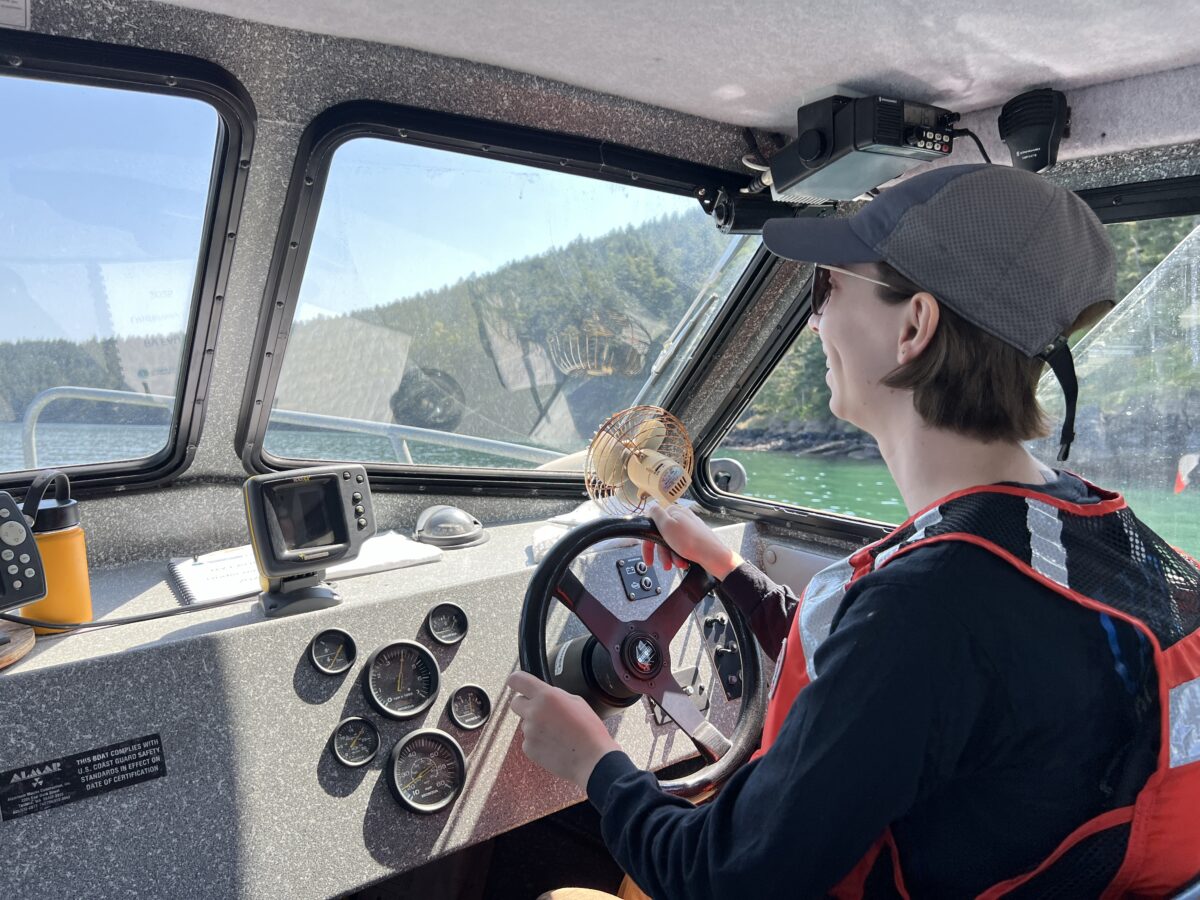
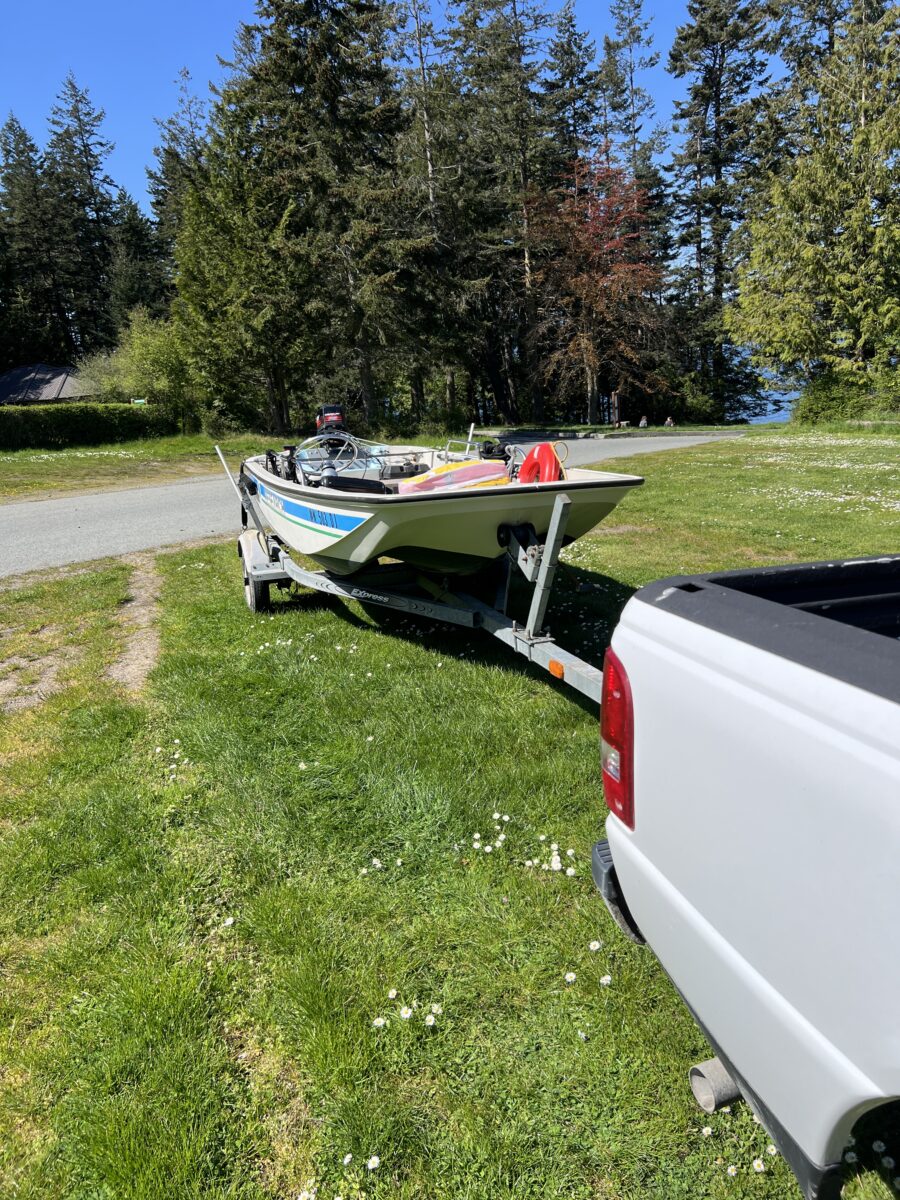
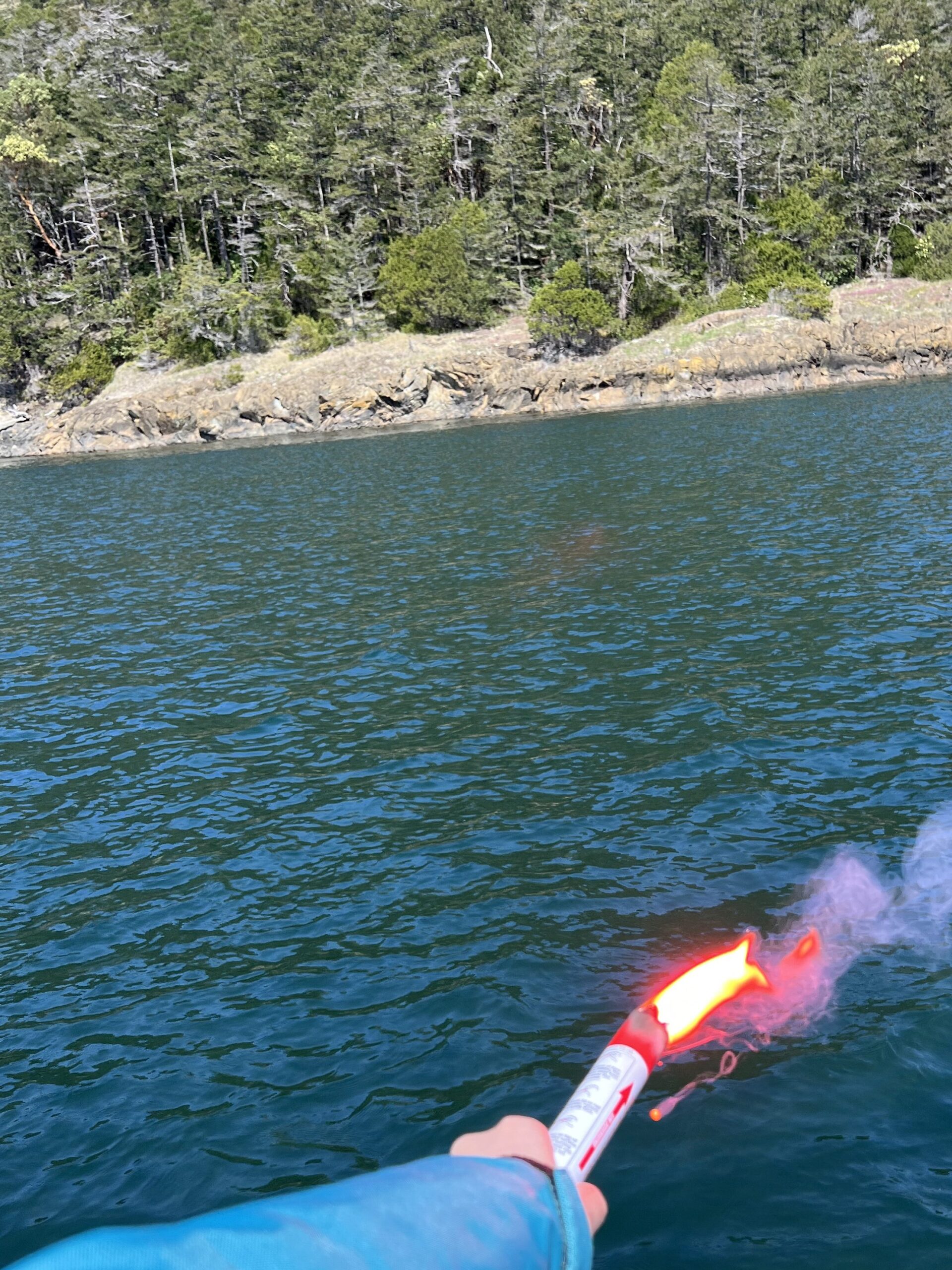
While completing my MOTC, I also saw some OWUSS alumni, including Julie Barber (1999 NA Scholar) and Megan Cook (2012 NA Scholar)!

A huge thank you to Heidi Wilken and the Point Defiance Zoo & Aquarium dive team for hosting me! Thank you to MOTC instructors Nate Schwarck, Derek Smith, and Mira Lutz for their enthusiasm and patience. And thank you to Julie Barber and Jay Dimond for hosting me!
Thank you to the Our World-Underwater Scholarship Society and our sponsor Rolex for making this scholarship experience possible. I would also like to thank Reef Photo and Video, Nauticam and Light and Motion for my underwater camera setup as well as Aqualung, Fourth Element, Suunto, Halcyon, and DUI for my diving equipment.